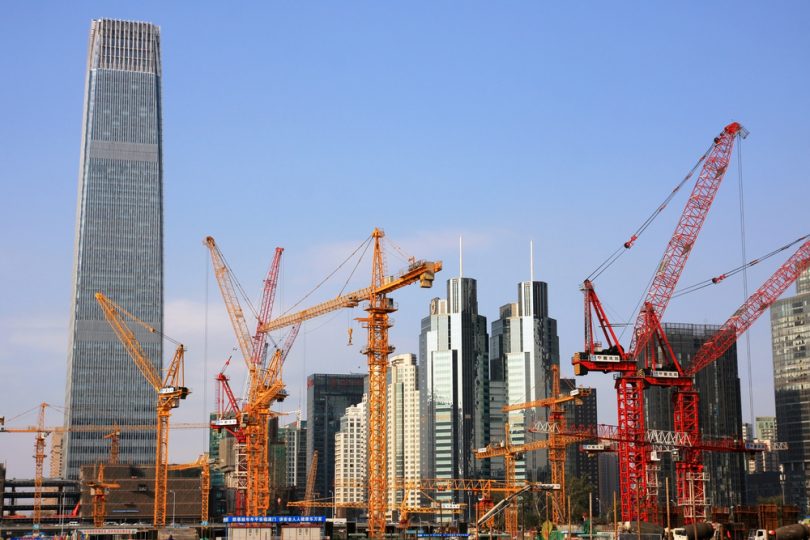BY CARISSA KWOK
In the construction sector, the flexibility and adaptability of the Chinese is remarkable—case in point: the agility and speed at which hospitals and temporary isolation facilities had been set up during the COVID-19 pandemic. The Chinese reacted swiftly with the necessary healthcare infrastructures and measures.
The 1,000-bed Huoshenshan Hospital and the 1,600-bed Leishenshan Hospital were built and completed within a span of 10 to 12 days. In the early days of the pandemic in 2020, these two hospitals represent amongst the largest and best-equipped new temporary hospitals erected specifically to treat COVID-19 patients.
The speedy construction was made possible by using that were placed into steel skeletons above concrete foundations, and then fitted out with the necessary medical infrastructure.
Read more:
Read more:
The Chinese construction industry has been recovering from the disruption caused by the COVID-19 pandemic. In Q3 2020, the construction industry’s value-add grew by 2 per cent, following year-on-year declines of 1.9 per cent in Q2 and 17.5 per cent in Q1 2020, according to the National Bureau of Statistics (NBS). To mitigate the economic impact of the pandemic, the country fast-tracked the implementation of major infrastructure projects (except the hard-hit Hubei region), resuming nearly 90 per cent of all major infrastructure projects as soon as mid-March 2020, at a time when major markets across the world had only just started to implement COVID-19 containment measures. In another positive development, real estate and fixed-asset investments have regained growth momentum, following the temporary disruption in the first quarter of the year. Moreover, in September 2020, the National Development and Reform Commission (NDRC) approved 14 fixed-asset investment projects worth CNY177.8 billion (USD25.15 billion), following approvals of CNY68.9 billion (USD10.1 billion) in August 2020.
The country is consistently pushing for development. Chinese President Xi Jinping has called for a focus on cementing the achievements in poverty alleviation, advancing the rural revitalisation in an all-round way, and deepening east-west cooperation.
For example, Shenzhen has grown at breakneck speed, from a collection of fishing villages to a global metropolis of over 12 million in just 40 years. Its urban villages have become a refuge for migrants who cannot afford to live in the city proper, or to commute daily from the urban fringes. One such village is Nantou, in the city centre. The architecture of the village is dominated by small-scale apartment blocks that have earned the nickname ‘handshake architecture’ for their close proximity.
Read more:
How Rural-Urban Migration Shapes Our Built Environment:
A Spotlight on China & India
China is the world’s most populous country with 1.44 billion citizens. However, as with several countries, China is also facing a growing ageing population, where a shrinking domestic labour market will be inevitable. The larger share of elderly citizens will require publicly funded resources, resulting in a heavier societal and financial burden.
For decades, China has reaped the benefits of a demographic dividend that supplied a young, mobile workforce for its manufacturing sector, which enabled China to emerge as a global economic power. This is a trend of concern, as its development is tied to its demographic advantages.
Smart construction
Not all is bleak—China’s digital landscape is laying the blueprint for its robust digital transformation. Access to modern technological infrastructure, digital marketplaces, big-data-enhanced operations, as well as an increased focus on sustainable growth and competition based on innovation, are all major positive developments that make China a favourable market both for entrepreneurs and established corporations.
The digital improvement has also given the construction sector a major boost that allows a maximisation of resources, offers pre-emptive analysis to potential problems, and enhances workflow. The construction industry grew in value from 13.9 billion yuan in 1978 to 5.57 trillion yuan (USD816.6 billion) by 2017, as stated by the Orange Business Services. This equates to an average annual growth rate of 16.6 per cent and comprised about 6.7 per cent of the country’s GDP in 2017. Smart buildings are also on the rise: China’s rapid construction industry growth has leveraged various digital technologies, including Internet of Things (IoT) and Building Information Modelling (BIM). These give construction companies a competitive edge that allows them to plan, design, construct and manage new buildings and infrastructure more efficiently. Technology is an economic engine for China, and the government has set an environmental goal of having 30 per cent of Green buildings for new construction by 2020.
With its digital prowess, the country has started seriously investing in sustainability and Green solutions. Total global offshore wind capacity is now over 35 GW—a 106 per cent increase over the past five years alone—helping the world avoid 62.5 million tonnes of CO2 emissions. This growth was driven by a record year in China, which leads the world in new annual offshore wind capacity for the third year in a row. China installed over half of the new offshore wind capacity globally last year, with over 3 GW of new offshore wind capacity in 2020. Feng Zhao, Head of Market Intelligence and Strategy at GWEC, commented, “Although China was hit first by the COVID-19 crisis, the impacts on the offshore wind sector were minimal, resuming business-as-usual as early as March 2020. China’s record-breaking growth is expected to continue in 2021, driven by an offshore wind installation rush to meet China’s Feed-in-Tariff deadline by the end of this year.”
Read more:
China installed half of new global offshore wind capacity during 2020 in record year
Not just renewable technologies, with its historical, sprawling landscapes, Chinese architects and agencies have started to restore the country’s precious natural environment via permeable strategies.
Read more:
Of course, there’s also China’s Belt and Road Initiative (BRI), a transcontinental long-term policy and investment programme that aims at infrastructure development and acceleration of the economic integration of countries along the route of the historic Silk Road. It is development strategy that aims to build connectivity and cooperation across six main economic corridors: Russia; Eurasian countries; Central and West Asia; Pakistan; other countries of the Indian sub-continent; and Indochina.
The future
Undeniably, China is a powerhouse in many aspects, be it innovation, technology, construction, architecture, design, etc. As the world’s largest population, it has no shortage of labour, manpower resources and talents. With its rich history and culture, there is much to explore and draw inspiration from. In 2021 and beyond, China will remain a force to behold in defining design paradigms and built environment trends. — Construction+ Online











